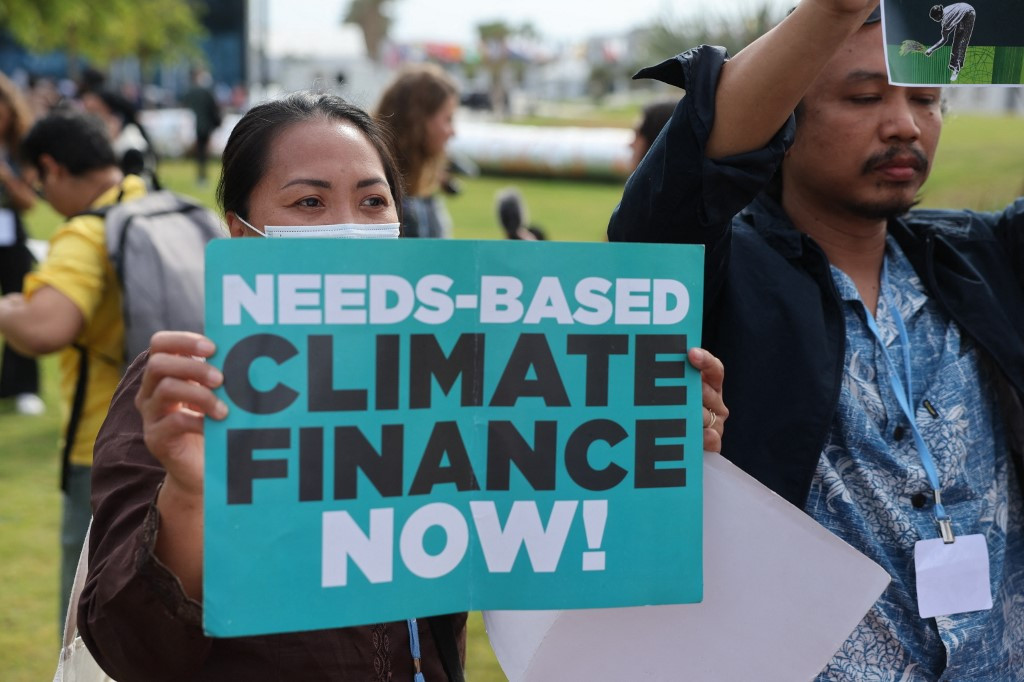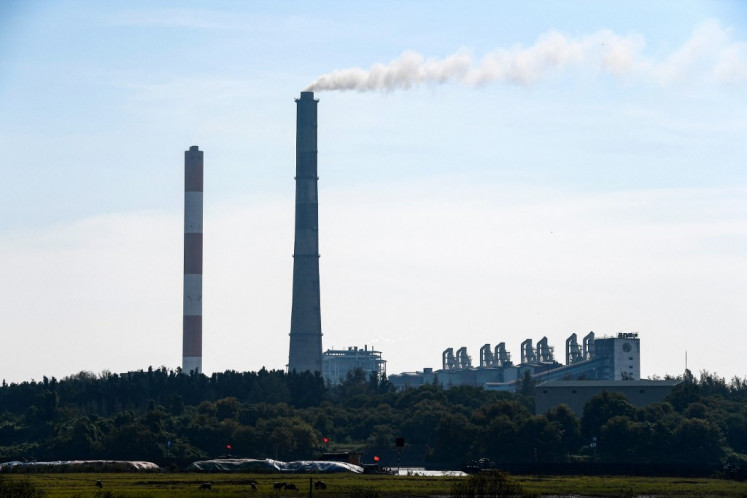Popular Reads
Top Results
Can't find what you're looking for?
View all search resultsPopular Reads
Top Results
Can't find what you're looking for?
View all search resultsArranging blended for financing energy transition
A clear taxonomy would allow investors to gauge the climate risk in their portfolio in the same way that bond ratings allow them to gauge the financial risk.
Change text size
Gift Premium Articles
to Anyone
O
ne of the greatest challenges to creating a sustainable future is mobilizing the trillions of dollars that will be needed to pay for the transition. Blended finance – combining public and private investment -- holds great promise but is not yet delivering funds on the required scale.
In a blended finance arrangement, a government or multilateral lending agency takes on an outsized portion of the risk associated with a sustainable project, making it easier to raise the rest from the private sector. Blended finance can mobilize private capital by de-risking investments in anything from sustainable infrastructure to green production, low-carbon transitions and beyond.
By reducing the commercial risk, governments and multilateral agencies can lower the cost of commercial borrowing and make the difference between a green project that is viable and one that never gets off the drawing board.
The International Finance Corporation (IFC), part of the World Bank Group, says it has deployed US$3.1 billion in concessional loans to attract $17.2 billion in additional financing since 2010 – a multiplier of just under 6 – although other surveys seem to indicate that the leverage effect is less dramatic.
The climate crisis and our failure to address it before now is in some senses the biggest market failure in recorded economic history, and blended finance is a way of co-opting market forces to drive a more sustainable future.
Currently through using subordinated debt, equity, insurance, guarantees, or technical assistance
The World Bank estimates that blended finance delivers an average of $9 billion a year in new funding for sustainable projects, which is encouraging, but still well-short of the estimated $125 trillion that some estimates say the world will require in order to achieve net zero by 2050.
The biggest challenge to scaling up blended financing is not the lack of money: last year financial firms pledged $130 trillion for climate transition at the Glasgow Financial Alliance for Net Zero. Nor is the risk appetite of the private sector a problem given the global search for yield.
The central shortcomings limiting the potential of blended finance are all inter-related: a lack of projects; a lack of clarity around what constitutes a green project; a lack of imagination; and a lack of institutional capacity in connecting projects and investors.
The first two are almost the same problem. Investors trying to build green portfolios need clarity that the assets they are buying are part of the solution to climate change rather than part of the problem, but there are no agreed definitions of the rules of what can be defined as a green asset.
If the financial services industry is to mass-produce blended finance or green assets more generally at the scale we need, we need to establish a transparent, widely accepted set of standards – a “taxonomy” in the industry jargon – that gives project designers a clear idea of what is and is not acceptable in a green project, and gives investors clarity and confidence that green assets are what they claim.
A clear taxonomy would allow investors to gauge the climate risk in their portfolio in the same way that bond ratings allow them to gauge the financial risk. Surveys have shown that retail investors are willing to accept lower returns on sustainable investments, but lack confidence that they will not fall victim to greenwashing.
There is progress on creating usable taxonomies. The European Union has published its own taxonomy, and we have joined forces with IFC, the Climate Policy Initiative, OECD and others to come up with FAST-Infra, a framework which aims to transform sustainable infrastructure financing into a mainstream, liquid asset class.
The last two are also closely related. Most blended finance project use subordinated finance, equity structures, insurance or technical assistance to reduce the risk for commercial lenders. We are starting to see bonds with coupons tied to environmental outcomes, which is encouraging. But in general the sort of innovation we are seeing in green technology is not being matched by innovation in green financing.
We believe that international banks have a vital role to play both in driving new green financing solutions and as a catalyst that can bring together project designers and multilateral development agencies on one side and investors on the other to create blended finance products on an industrial scale.
We are also working to deepen capital markets in countries like Indonesia to make it easier to access finance locally – and to connect international investors to domestic markets rather than take Indonesian projects to New York, London or Hong Kong.
The battle against climate change will be won or lost here in Asia. Six of the world’s 10 largest producers of carbon dioxide are in Asia, as are more than half of the world’s most vulnerable countries.
Blended finance offers a real opportunity to mobilise the trillions of dollars Asia urgently needs to transition to a sustainable, net-zero future. But if we are to realize its full potential, we need to both streamline the process and make it more transparent.
***
The writer is president director of PT Bank HSBC Indonesia.










